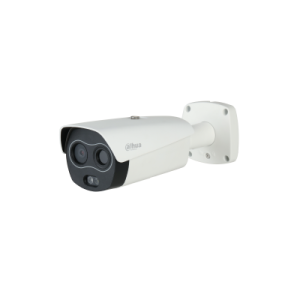Description
Thermal cameras, also known as infrared cameras or thermographic cameras, are specialized imaging devices that detect and visualize thermal energy, or heat, emitted by objects and environments. Unlike traditional cameras that capture visible light, thermal cameras operate in the infrared spectrum and create images based on variations in temperature.
Thermal cameras work on the principle of thermal imaging, which utilizes sensors called microbolometers to detect and measure the infrared radiation emitted by objects. The sensors convert the detected infrared radiation into electrical signals, which are then processed to create a thermal image or video.
The resulting thermal images represent the temperature distribution of the objects and the surrounding environment, with different colors or grayscale values assigned to different temperature levels. Warmer objects appear as brighter or lighter areas, while cooler objects appear as darker areas.
Thermal cameras offer several advantages in various applications:
Temperature measurement: Thermal cameras can accurately measure the temperature of objects or areas within the camera’s field of view. This capability is particularly useful in industrial settings for monitoring equipment, detecting hotspots, or identifying temperature anomalies that could indicate potential issues or failures.
Enhanced visibility: Thermal cameras are effective in low-light or no-light conditions as they rely on detecting thermal energy rather than visible light. They can “see” through darkness, fog, smoke, and other visually obstructive conditions, providing improved visibility and situational awareness.
Detection of heat signatures: Thermal cameras excel at detecting and visualizing heat signatures, making them valuable in security and surveillance applications. They can help identify intruders, monitor perimeter boundaries, and detect abnormal heat patterns that may indicate the presence of hidden objects or individuals.
Search and rescue: In search and rescue operations, thermal cameras can assist in locating missing persons or identifying survivors in disaster scenarios. Their ability to detect body heat signatures can greatly expedite search efforts, even in challenging environments.
Fire detection: Thermal cameras are effective in identifying potential fire hazards and detecting fires in their early stages. By detecting abnormal heat patterns or temperature increases, thermal cameras can trigger alarms and alert operators or fire monitoring systems, enabling swift response and reducing the risk of severe damage.
Energy efficiency: Thermal cameras can be used to conduct energy audits and identify areas of heat loss or inefficiencies in buildings. By pinpointing areas of energy wastage, thermal cameras help optimize energy consumption, improve insulation, and reduce operational costs.
Thermal cameras are available in various form factors, including handheld devices, fixed installations, and integrated into other surveillance systems. They have become increasingly accessible and affordable, expanding their use in a wide range of industries, including security, industrial monitoring, firefighting, building inspections, and more.



Reviews
There are no reviews yet.